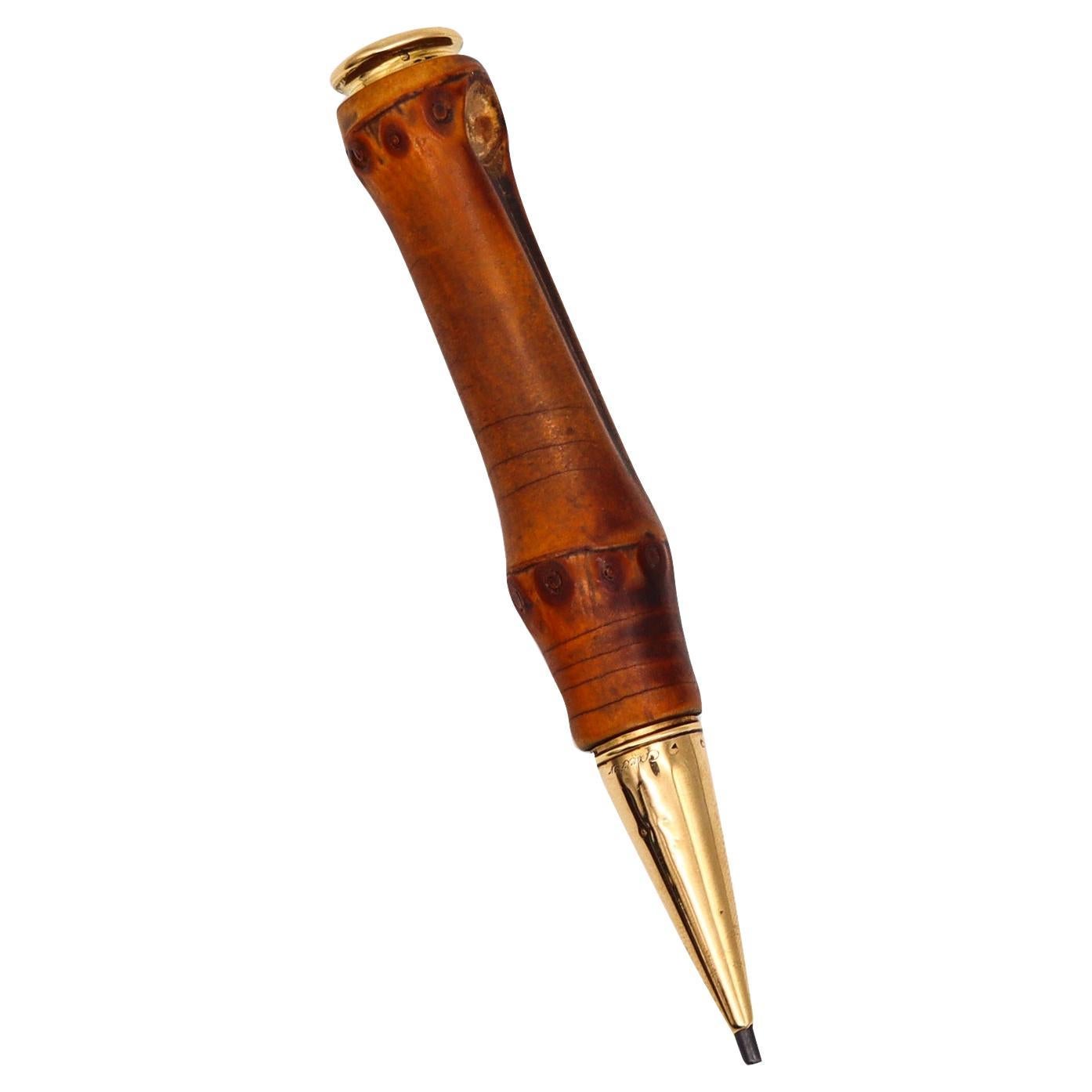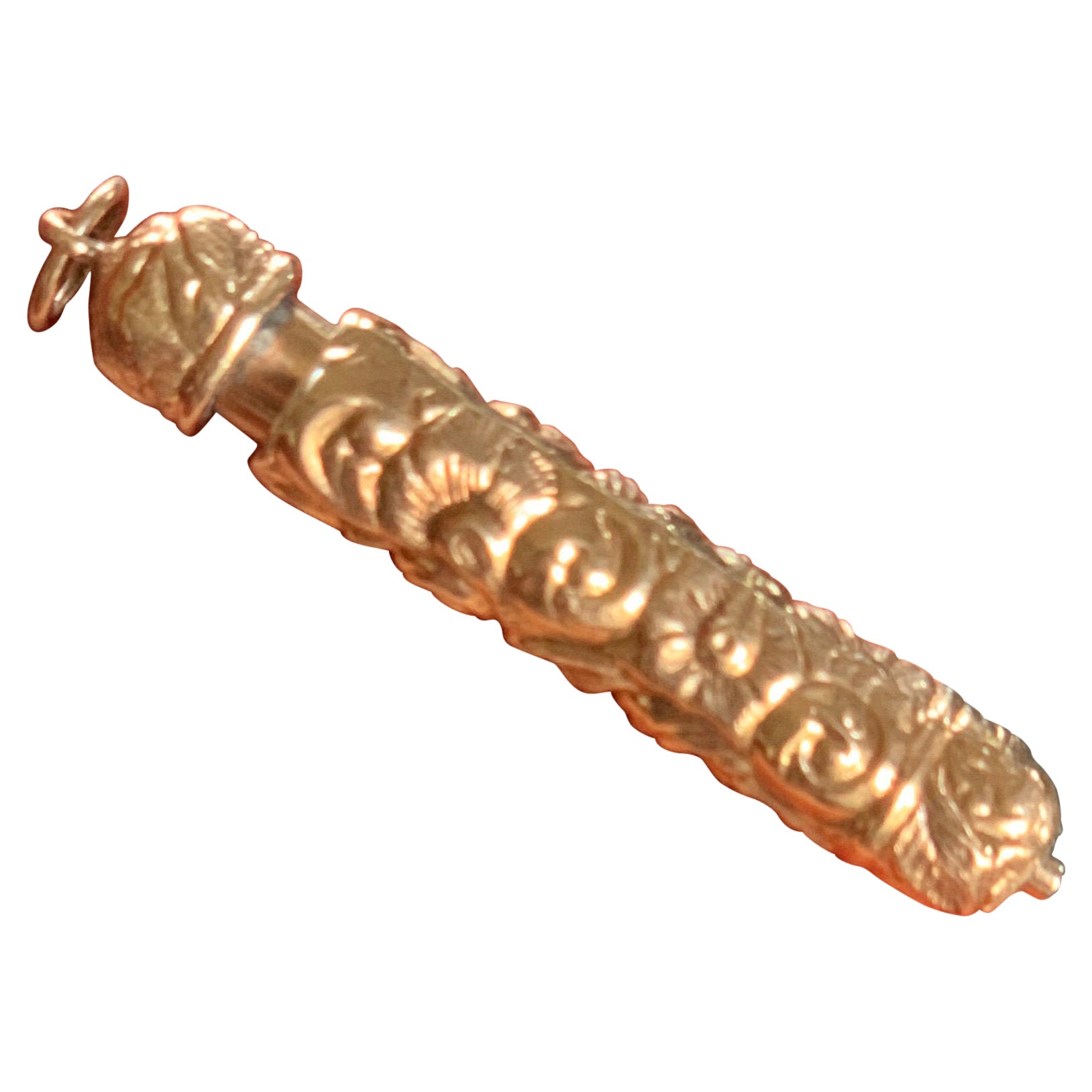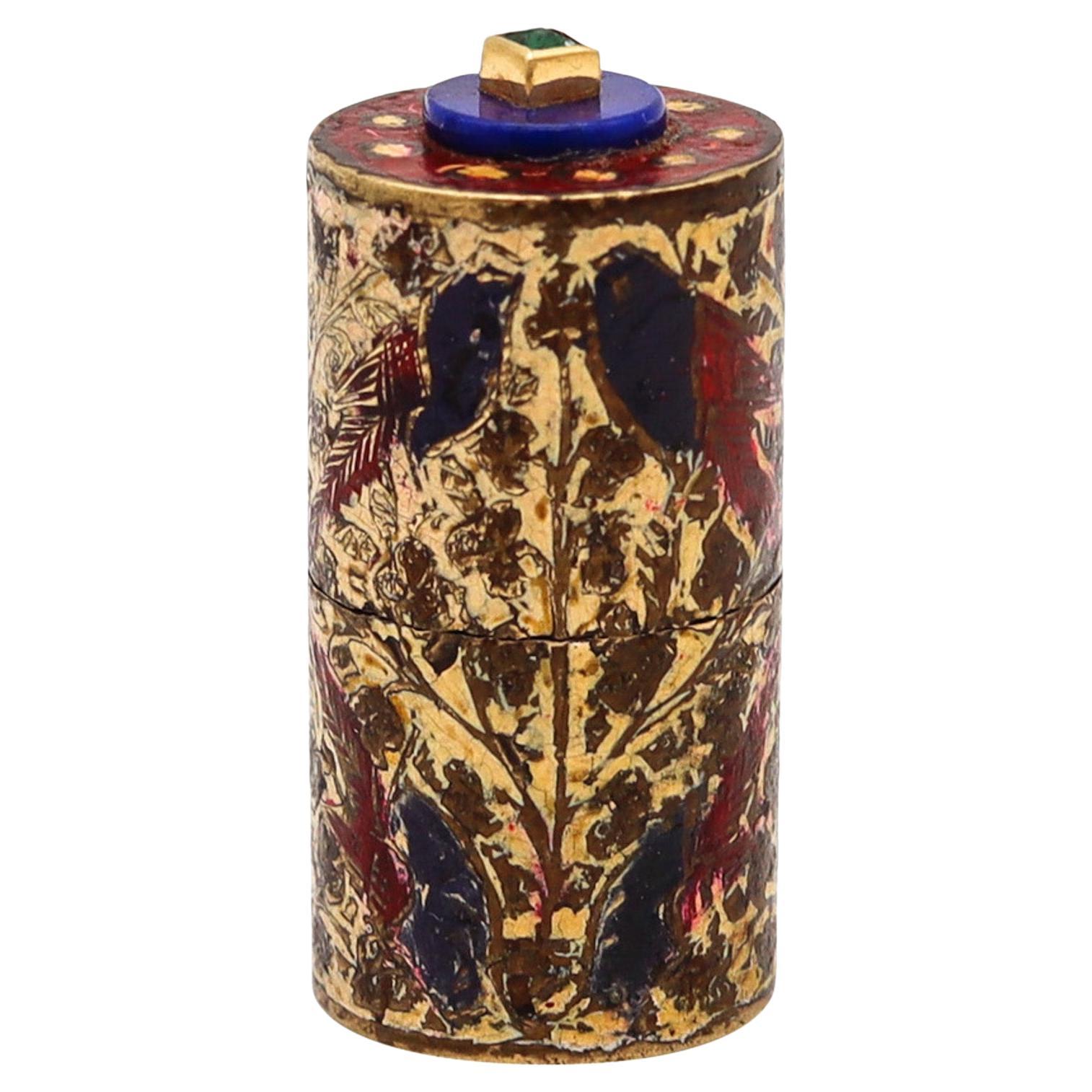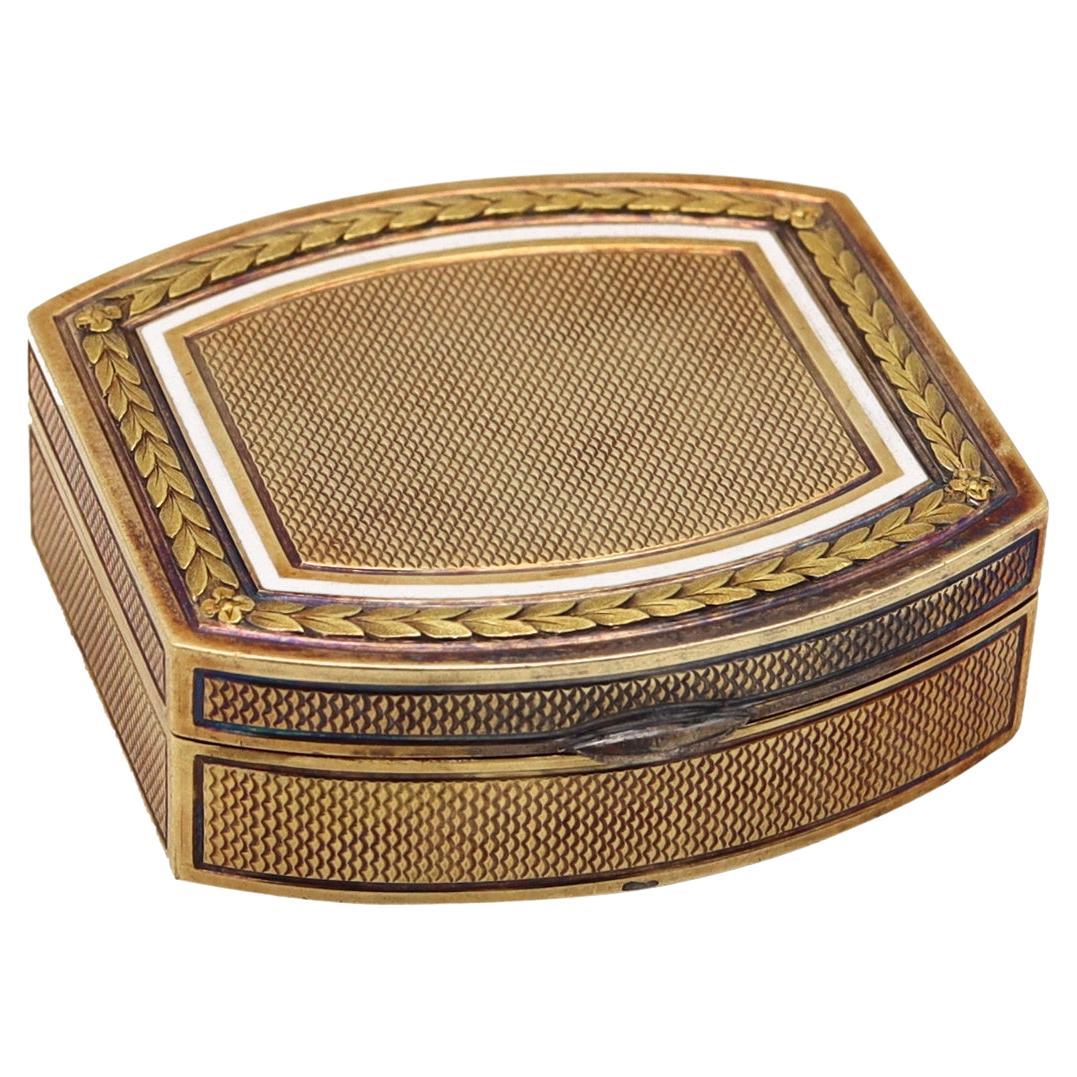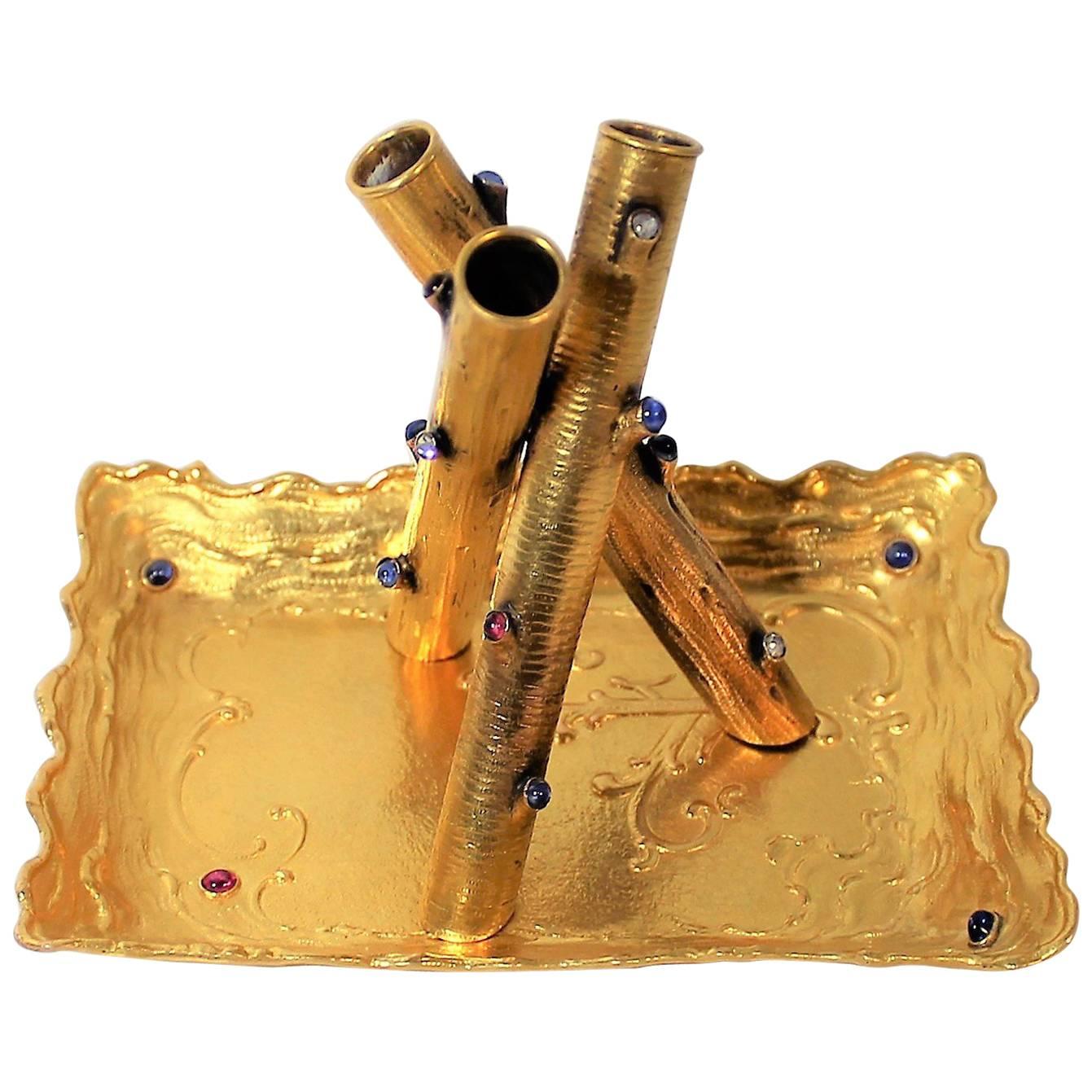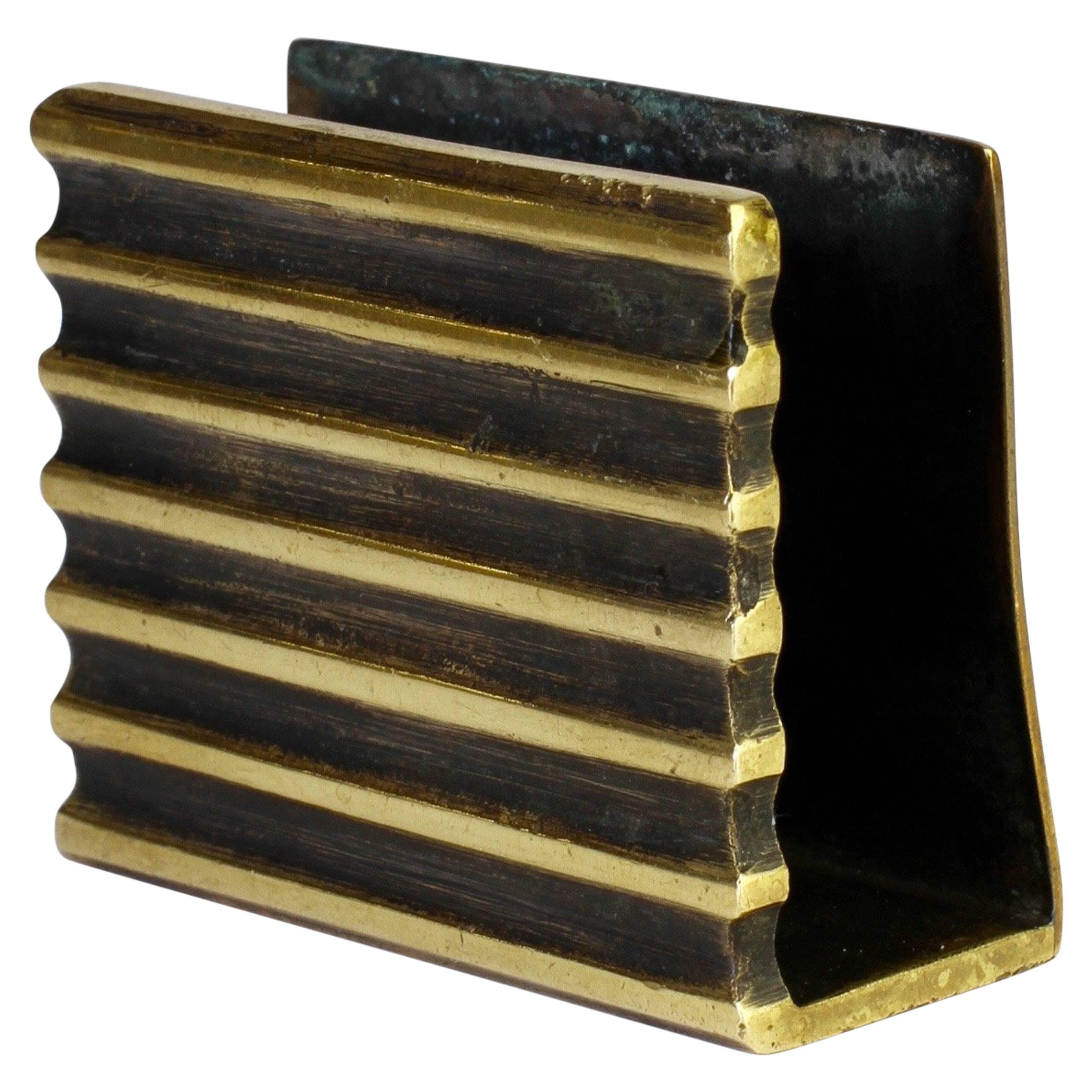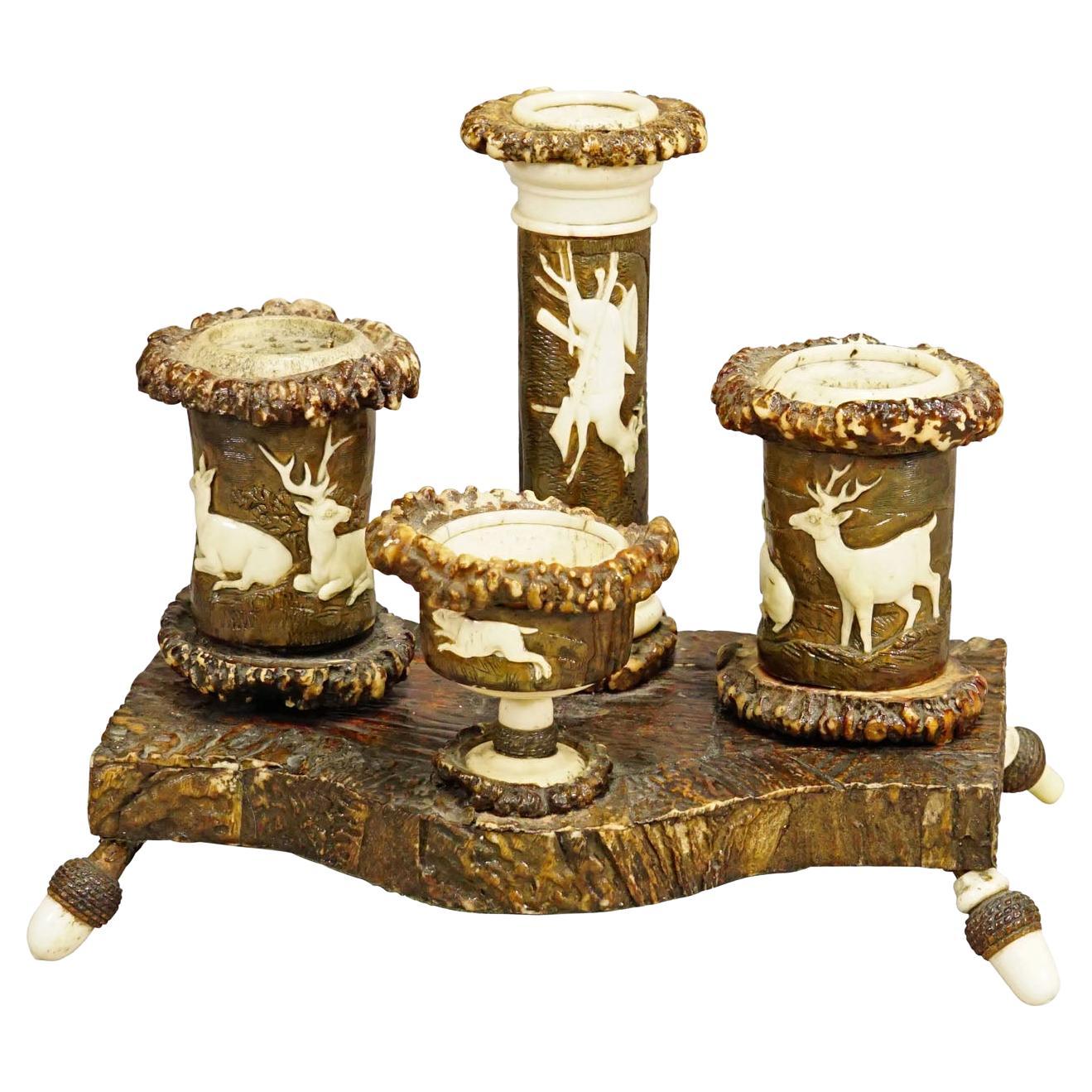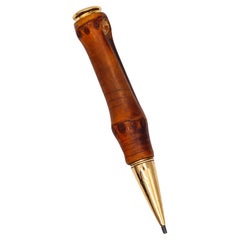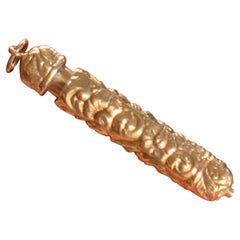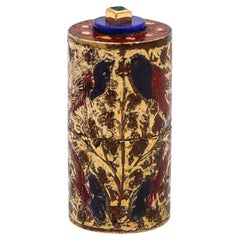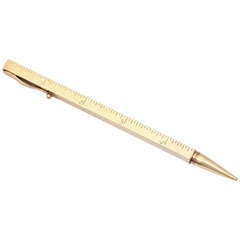
Rare 14kt Gold Propelling Pencil
View Similar Items
1 of 6
Rare 14kt Gold Propelling Pencil
About the Item
- Dimensions:Width: 5.75 in (14.61 cm)
- Place of Origin:
- Period:
- Date of Manufacture:Circa 1920
- Condition:
- Seller Location:New York, NY
- Reference Number:1stDibs: 1311209193206
You May Also Like
- Cartier Paris 1950 Midcentury Bamboo Mechanical Pencil in 14kt Yellow GoldBy CartierLocated in Miami, FLBamboo pencil designed by Cartier. Very unusual and useful luxury piece, created in Paris France by the iconic house of Cartier, during the mid century period, back in the 1950's....Category
Vintage 1950s French Mid-Century Modern Desk Sets
MaterialsGold
$3,160 Sale Price20% Off - 19th Century French Tiny Pencil Case in Gold Chiseled with FlowersLocated in Sofia, BGSmall pencil case in gold, chiseled with flowers. Late 19th century - early 20th century May be used as a pendant as well. Gross weight: 8.77 gr Small shocks France, circa 1900.Category
Early 20th Century French Collectible Jewelry
MaterialsGold
- Cartier 1926 Tom Pouce Ladies Lighter 18kt Gold Bronze Champlevé Emerald & LapisBy Cartier, CartierLocated in Miami, FLMughal ladies Tom Pouce lighter designed by Cartier. Fabulous and extremely rare ladies cylindrical gasoline lighter. Created in Paris during the art deco period by the house of Cartier, back in the middle of the 1920's. This miniature Tom Pouce lighter, takes its name from the classic short fairy tales by the Grimm's brothers, Tom Thumb (Tom Pouce being the French translation). It was crafted with Champlevé colored enamels over rustic bronze and accented with details in yellow gold of 18 karats. Embellished with natural lapis lazuli and an emerald. The main outside body is decorated with organics elements and figures of red and blue birds. Gorgeous look and surely a great conversation piece which is accompanied by the round Cartier red box. Champlevé, in the decorative arts, is an enameling technique or an object made by the champlevé process, which consists of cutting away troughs or cells in a metal plate and filling the depressions with pulverized vitreous enamel. The raised metal lines between the cutout areas form the design outline. Emerald: Accented on top in a bezel setting, with 1 square faceted cut of a natural green emerald of about 0.15 carats. Lapis: Mount with 1 flat round cabochon cut, carved from lapis lazuli of about 1.25 carats. Birthstone: Emerald for the month of May. Weight: 21.95 Grams, (14.07 Dwt). Measurements: Have a diameter of 16 mm and a height of 33 mm (0.63 x 1.30 Inches). Hallmarks Stamped with the maker's mark, the serial numbers, the French taxation mark for luxury items BL inside a rectangular cartouche and signed, "CARTIER 5554", stamped with matching cases numbers, 13 & 13. Ministere Des Finances Lighter Tax 1911-1945 Note: On 10th December 1910 the French state adopted a new tax regulations on all devices indented to produce spark or fire by friction, or by any other means, and of the combustion of a flammable substance. Since 1st January 1911 every lighter in France that was intended for sale in the French market had to be taxed and adequately marked. To confirm that the excise duty was paid to the Ministry of Finance a special duty metal plate (stamp) was attached (usually welded) to the lighter by the lighter manufacturers. The fees charged by the French state were high but the tax rates levied by the state were varying depending on the type and finish of the lighter. Following tax rates were used: 2 French francs for common pocket lighters, 5 Fr for pocket lighters made of silver, 20 Fr for luxury pocket lighters (e.g. made of gold), 5 Fr for common table/desk lighters (over 10 cm), 10 Fr for table/desk lighters (over 10 cm) made of silver, 50 Fr for luxury table/desk lighters (over 10 cm) made of gold or platinum. Between 1911 and 1916 a simple copper plate was used which had the date 1911 engraved. Later, between 1916 and 1945 a new plate (undated) was introduced with the letters "C" and "I" (stands for indirect taxes) and a profile of Mercury (patron god of financial gain, commerce and messengers) with an inscription "Ministère Des Finances" (eng. Ministry of Finance). Two shapes were used for the plate – oval for table lighters, the other one for pocket lighters. Additional to the two duty plates a marking "BL" (Briquet de Luxe, eng. luxury lighter) was introduced in 1926. It was a small hallmark which was considered as more discreet and applied only on luxury lighters like Quercia or Lancel. It is worth to mention that France was not the sole country where lighters were taxed and marked with special plates...Category
Vintage 1920s French Art Deco Tobacco Accessories
MaterialsMulti-gemstone, Gold, Bronze, Enamel
$3,188 Sale Price / set20% Off - Very Rare P H Vogel & Co Antique Shagreen Cigarette Case Silver & Gold GiltBy P.H. Vogel & Co.Located in GBWe are delighted to offer for sale this stunning antique PH Vogel & Co silver and gold gilt cigarette case A very rare good looking and functional piece of collectible smoking equ...Category
20th Century English Art Deco Tobacco Accessories
MaterialsSilver
- Rare 1950s Dunhill Aquarium Service Lighter, Gold Plated, Made in EnglandBy DunhillLocated in Hong Kong, HKA rare 1950s Half-Giant Dunhill Aquarium table lighter (made in England) with silver-plated metal work Each of these lighters are very rare and unique as they were hand carved and ...Category
Vintage 1950s English Mid-Century Modern Tobacco Accessories
MaterialsSilver Plate
$9,000 Sale Price25% Off - Henrik Wigström 1908 Russia Saint Petersburg Enameled Snuff Box in 14kt GoldBy Henrik Wigström 1Located in Miami, FLA snuff gold box designed by Henrik Wigström. Beautiful neo classic snuff box, created in St, Petersburg Russia, at the workshop of Henrik Wigström, back in the 1908. This piece has been carefully crafted in the Russian imperial and Louis XVI styles, in solid yellow gold of 56 zolotnik (14kt) and embellished with applications of white enamel. Decorated around with garlands and intricates dotted patterns. Fitted with an invisible hinge and close perfectly well. Weight: 36.65 Grams, (23.49 Dwt). Measurements: 41 mm by 39 mm by 14 mm (1.61 x 1.53 x 0.55 Inches). Hallmarks: Stamped on both parts with Russian marks; the kokoshnik post 1908 mark with the letter a for the city of Saint Petersburg, the maker's mark HW associated to Henrik Wigström inside an oval cartouche, scratched with his inventory numbers 86111 and the 56 zolotnik mark for the assay and warranty of the gold. Other Hallmarks: Stamped in the outside border, with German importation marks; the German Crown mark, the retailer mark AT inside an oval and the 585 mark for the assay and warranty of the gold. Henrik Immanuel Wigström born on 1862 and was a Finnish silver & goldsmith. He was one of the most important Fabergé workmasters along with Michael Perchin. Perchin was the head workmaster from 1886 until his death in 1903, when he was succeeded by his chief assistant Henrik Wigström. These two workmasters were responsible for almost all the imperial Easter eggs. Henrik Wigström was born in Ekenäs, Finland, and was apprenticed to a local Danish born goldsmith named Peter Madsén, a successful manufacturer of silverware who was familiar with the jewellery trade in the city of St. Petersburg, as at one time he had had a workshop there. Once in Madsén's employment, his master's trade with Russia, as well as his numerous business contacts here, brought him to work in St. Petersburg. Goldsmith Werner Elfström employed Wigström as a apprentice on his arrival in the capital in 1875. Wigström became assistant in 1884, at the age of 22, to Perchin, whose shop at that time was already working exclusively for Fabergé. Wigström became head workmaster at Fabergé after Perchin's death in 1903. The number of craftsmen in Wigström's workshop diminished drastically with the outbreak of World War I. By 1918, the Revolution forced the complete closing of the House of Fabergé. Aged 56, Wigström retreated almost empty-handed to his summer house, on Finnish territory, and died at Terijoki in 1923. His art is similar to Perchin's but tends to be in the Louis XVI, Empire, or neo-classical style. Nearly all the Fabergé hardstone animals...Category
Antique Early 1900s Russian Neoclassical Snuff Boxes and Tobacco Boxes
MaterialsGold, Enamel
$4,788 Sale Price20% Off
Recently Viewed
View AllMore Ways To Browse
Propelling Pencil Vintage
Medical Device
Slide Rule
Surveying Instrument
Survey Instruments
Surveyor Measure
Vintage Electronic Instruments
Antique North Arrow
Antique Medical Models
Antique Microscope Scientific Instruments
George Cook
Antique Scientific Microscopes Microscope Scientific Instruments
Antique Microscopes Scientific Instruments
Address Numbers
Wwii German Binoculars
Optician Sign
Stick Barometer
Folding Camera
